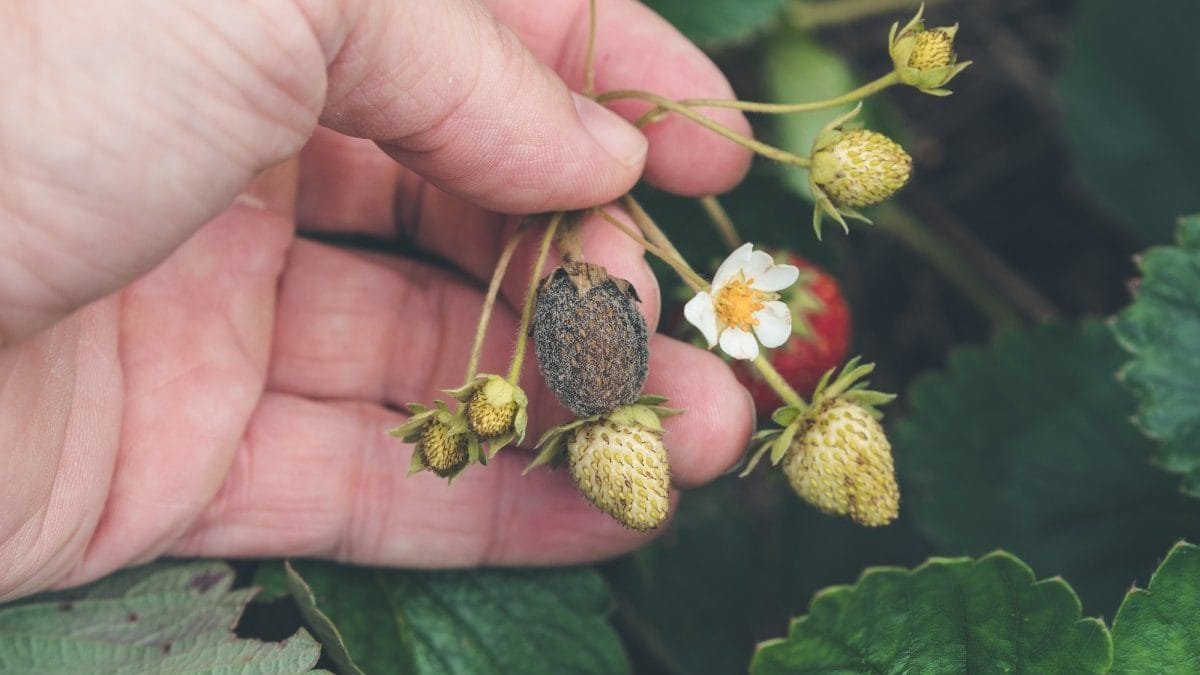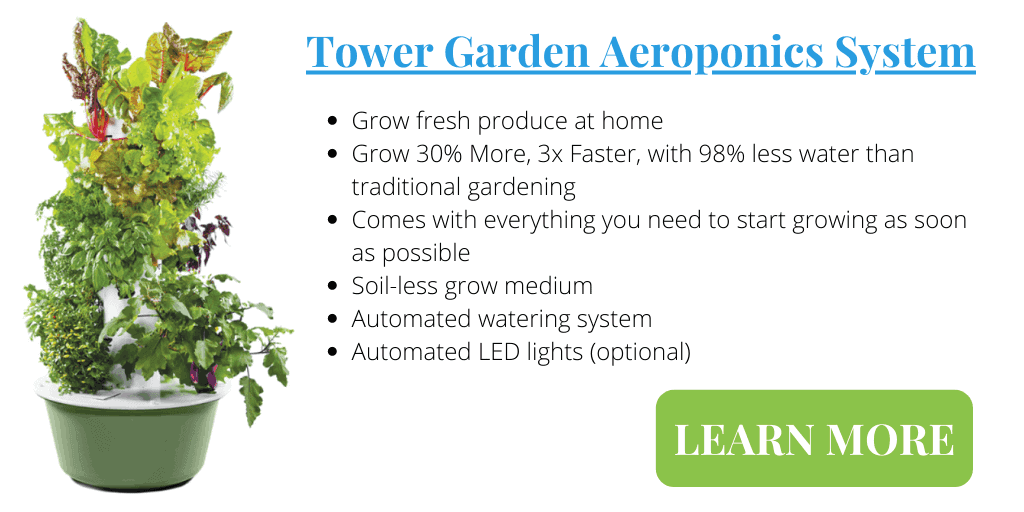When it comes to hydroponics, there are a variety of diseases that can wreak havoc on your plants. One of the most common is gray mold. But, what is gray mold in hydroponics?
Gray mold (or Botrytis) is a white or gray fungus that can infect a variety of different plants on any part of the plant itself. It spreads rapidly and, sadly, can lead to plant loss if it’s not treated in a timely manner. Gray mold is common in hydroponics, as it thrives in humid conditions.
In this article, we’re going to dive deeper into what gray mold is, how it infects your hydroponic plants, and how you can properly treat it so it doesn’t spread.

What Causes Gray Mold in Hydroponics?
Gray mold is caused by the wide-spread fungus known as Botrytis cinerea. It can affect most vegetable crops, and thrives in environments that are high in humidity. It is one of the common plant problems in a hydroponic system.
Let’s take a look at how gray mold can infect your hydroponic plants below:
How Does Gray Mold Infect Plants?
Gray mold infects plants by generating spores either in the air or dispersed by water.
In order for this fungus to grow and survive, it requires a high humidity environment and the appropriate nutrients. Growth of gray mold usually begins in the damaged region of the plant.
When a portion of the plant breaks off, it provides a breeding ground for the fungus where its nutrients are exposed. As this occurs, the mold continues its spread to other areas of the plant.
Beyond affecting already damaged plants, gray mold can also infiltrate seedlings found in high humidity, drying flowers, and cuttings.
Getting Rid of Gray Mold in Your Hydroponic Garden
It is imperative to keep the mold from spreading to other plants to ensure the well-being of your hydroponic garden.
For this reason, the infected plant should be uprooted and removed from its surroundings.
Keep in mind, you shouldn’t simply cut off the areas where gray mold has grown. Instead, you should remove the entire affected plant and dispose of it far away from the rest of your garden.
Cutting off the molded areas just exposes additional plant tissue (and nutrients) for gray mold to attack.
This is why disposing of the entire infected plant far away from your hydroponic garden is the best solution. Just make sure you don’t harm any other healthy plants while doing this.
It’s crucial you don’t dispose of molded plants near the rest of your garden, as spores can be dispersed into the air and re-infect your remaining plants.
Tips For Reducing Risk Of Gray Mold In Your Hydroponic Garden
- Ensure all hydroponic equipment is sterilized on a regular basis.
- Reduce the humidity in the garden by taking steps to provide ventilation in your grow area.
- For proper airflow, avoid growing too many plants near each other. As an additional step, trim plants whenever necessary.
- Minimize plant exposure while taking cuttings.
- Make sure your hydroponic garden is free of trimmings and dead plant material.
- Keep your plants as dry as possible.

Other Plant Diseases to Watch Out For
Now that we’ve answered the question “what is gray mold in hydroponics?” let’s take a look at some other plant diseases that could wreak havoc on your home hydroponic system.
Mildew
Beyond the issue of gray mold, there are other plant diseases gardeners should be aware of. One such disease is mildew.
Mildew can develop on your plants’ leaves as a gray coating of small granules. Do not be fooled by the aesthetic paint-splatter pattern it may appear as at first.
Mildew poses a significant problem, and when it progresses, it will cover the entire leaf and suffocate it.
Luckily, as mildew is also a fungus, some of the aforementioned measures can be helpful in preventing it.
Mildew is not as dangerous as gray mold; so there are ways you can eliminate it once you notice it growing on your plants.
One of the most common ways to get rid of mildew is to use a fungicide and wipe the plant with a cloth.
To keep mold and mildew from forming, make sure to:
- Reduce the humidity to 50%.
- Be aware of dead organic matter or debris.
- Before visiting the garden, make sure you wash up (especially if you’ve been outside.)
- Increase air circulation.
- Sanitize your equipment.
Root Rot
Root rot can be tricky to detect. This is especially true if you’re using a grow medium that prevents you from seeing the roots.
If you use a growing medium that allows you to see the roots, a brown appearance indicates rotting roots.
Without visible roots, a tell-tale sign of root rot will be the sulfuric “rotten egg” odor. There will also be a considerable drop in the pH of your hydroponic garden.
It may be too late if you only notice root rot after the plants have begun to wither and yellow.
On occasion, another fungus named pythium can cause mushy, brown deposits on the root tips.
This requires a rapid cutting-back of afflicted roots and the same measures as dealing with a plant affected with mold and mildew.
You can prevent non-fungal root rot by taking the following actions:
- Between waterings, allow time for your growth medium to aerate.
- Do not overwater your plants.
- Implement the use of opaque growing equipment, wrapping, or opaque tubing to keep the plant’s base dark and prevent algae.
- Do not bring the outside indoors.
- Keep all components of your hydroponic system sanitized.
- Maintain a pest-free environment.
- Remain cautious of transplants.
- Maintain the nutrient solution’s temperature below 75 degrees Fahrenheit.
How to Prevent Disease in Hydroponics
As we’ve covered in this article, the most common diseases that affect hydroponic systems are mildew, mold, or fungus.
Luckily, most of these diseases can be effectively prevented by taking a few necessary steps. We’ll outline these steps below:
1. Improve Air Circulation
With proper air circulation, mold, mildew, and fungal spores are less likely to infect your hydroponic plants.
That’s why it’s imperative to keep in mind the spacing of your plants when designing your garden. Allow air to flow easily between each plant!
Another step to take to improve air circulation is pruning.
When done on a regular basis, pruning not only lets air travel easily between different plants but results in increased airflow within the plant’s leaves and branches.
When ventilation and fans are introduced to indoor hydroponic systems, otherwise stagnant air is circulated more readily.
Adding fans to outdoor gardens that have little natural ventilation will also help.
- 18 inch curved fan blades for optimal air movement
- Speed adjustable with pull chain control featuring three different speeds
- Sealed, permanently lubricated industrial motor for wet locations. OSHA approved grill.
2. Avoid High Humidity Levels
High humidity also encourages the proliferation of plant diseases.
Humidity may be readily regulated in an indoor hydroponic system by ventilation or a using a dehumidifier in your grow room.
Humidity levels can get too high in smaller enclosed grow areas like when using a grow tent. The combination of heat from the grow lights and moisture from the nutrient solution in the reservoir can amplify the humidity levels.
Conversely, controlling the humidity in an outdoor setting is a long shot. In this case, making sure there’s enough air circulation is the best option.
3. Properly Disinfect Equipment and Tools
Properly disinfect tools and equipment after each usage – and sometimes even between plants! This is essential specifically when it comes to your pruning shears.
Maintaining a high level of cleanliness when it comes to tools will keep bacteria and mold from making their way onto the plant residue, preventing these infecting agents from being transmitted to your healthy plants at a later time.
Setting aside time to clean between pruning plants in various locations is also a worthwhile precaution to take. It’ll prevent diseases from spreading from an infected plant to a healthy one.
You can use vinegar as a disinfectant. It’s effective in cleaning tools and is a natural method to eliminate bacteria without the use of harsh chemicals.
4. Provide The Right Amount of Lighting
Overlooking the importance of lighting is a regrettable decision, especially when it comes to an indoor hydroponic system. Plants can easily be shaded by their tall, leafy companions.
Monitoring your garden for shaded areas that could potentially be the best breeding ground for fungus and mold to grow is helpful.
To help light reach every little leaf and vein of your plant, make sure to prune your plants and set appropriate spacing between plants.
Adding more full spectrum LED lighting to your garden is crucial to ensure all regions of your system receive the proper amount of light.
- Full Spectrum: Barrina LED grow lights 4ft provide indoor plants with full-spectrum sunlight...
- Super Bright and High PPFD: Consuming only 252W with 1152 LEDS totally, replace 1400w general...
- Easy Installation: With included tape, clips and cable ties, you could install the lights by...
5. Perform Routine Maintenance
Routine maintenance of your hydroponic system cannot be overlooked in its benefits.
Most fungi and mold can be avoided by simply discarding plant cuttings and keeping your garden nice and clean.
Another tip- if you do find yourself spraying or top watering your plants, do it early in the day so the foliage and flowers have an opportunity to dry in the light.
Conclusion
So…what is gray mold in hydroponics? As we discussed, gray mold is a fungus that attacks a variety of plants and thrives in humid conditions.
It is one of many plant diseases (along with mildew and root rot) that can infiltrate and wreak havoc on your hydroponic system.
Use the tips outlined in this article either to prevent gray mold or to treat it properly if/when it does occur.



